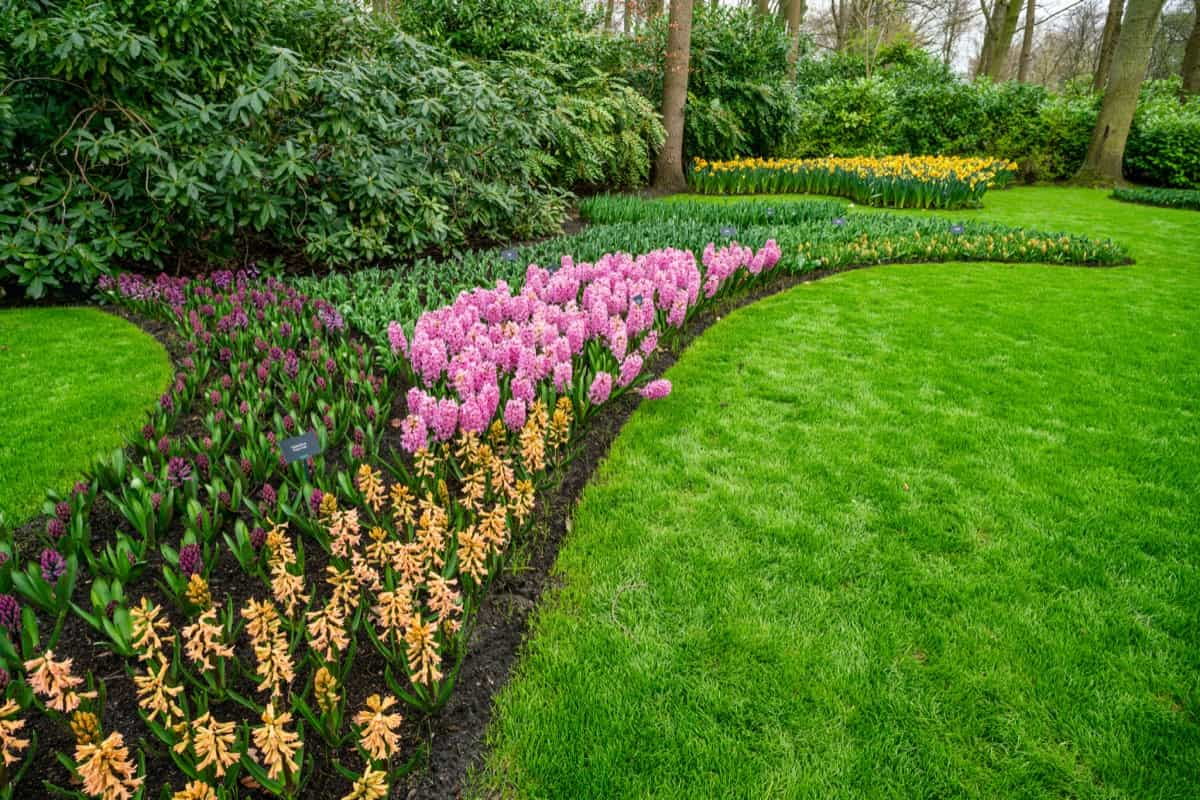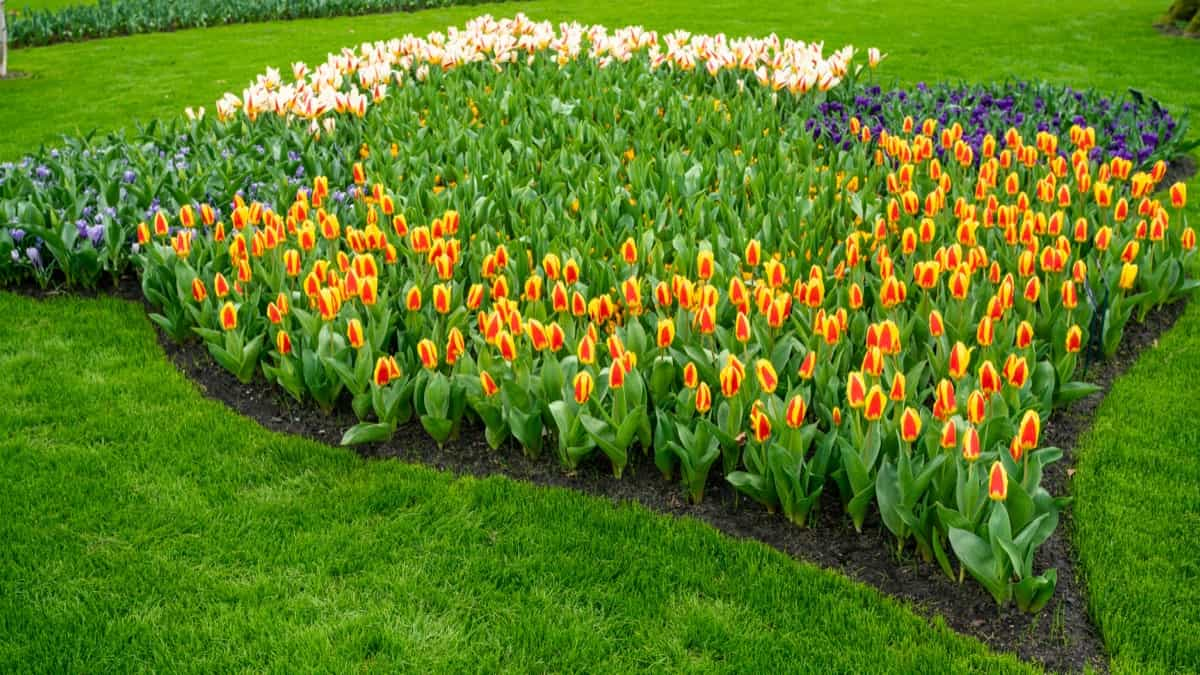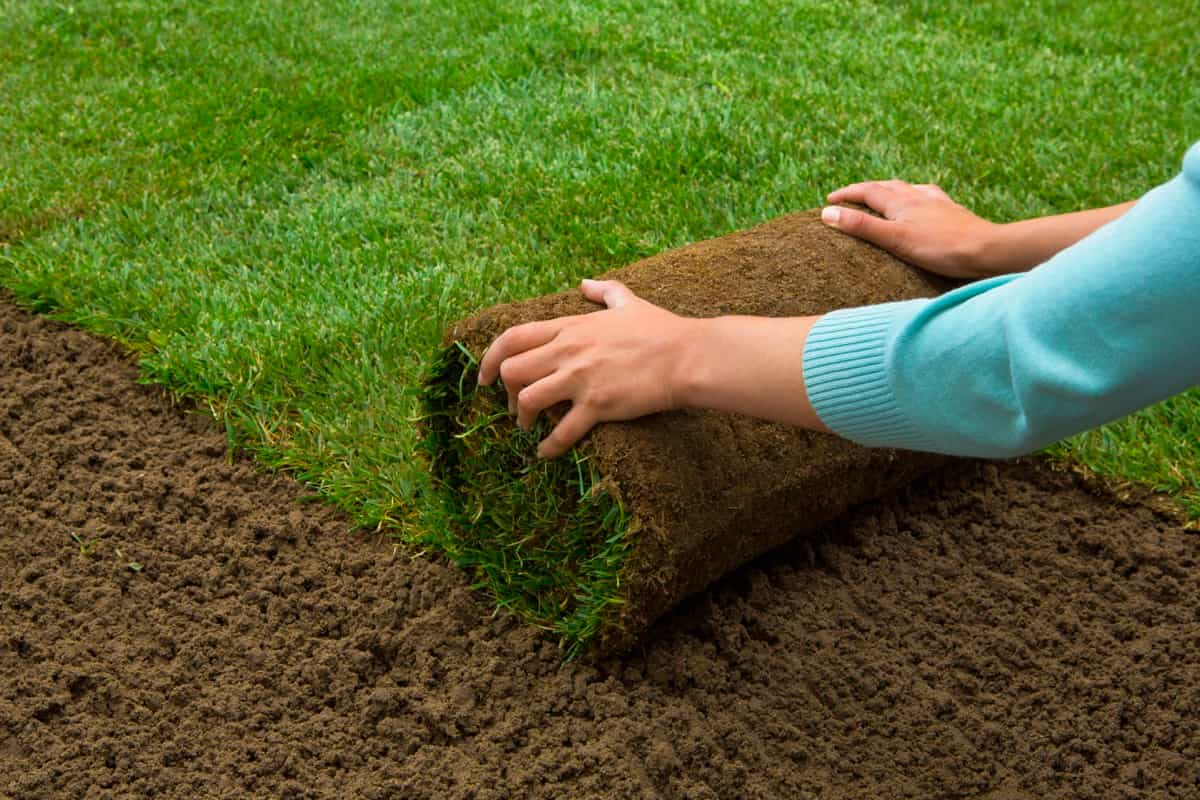As more homeowners worldwide are recognizing the environmental impact of their properties., eco-friendly lawns have been gaining popularity. Many are finding that the traditional front lawn simply doesn’t fit into their eco-conscious lifestyle with its endless need for water and care. In this regard, eco-friendly front yard ideas offer an alternative, providing an attractive and sustainable way to replace conventional grassy spaces. This article explores how to replace a front lawn with a beautiful, eco-friendly garden that’s visually appealing, benefits the local ecosystem, and conserves resources.

How to Replace a Front Lawn With a Beautiful Garden
How to Replace a Front Lawn With a Beautiful, Eco-friendly Garden
The process of transforming your traditional lawn into an eco-friendly garden begins with understanding the environmental dynamics of your property. The traditional front lawn, with its homogeneous green carpet, requires large amounts of water and synthetic fertilizers. On the other hand, an eco-friendly garden leverages natural processes and local plants to create a beautiful, self-sustaining landscape.
This transformation often involves removing the current lawn, preparing the soil, choosing appropriate native plants, setting up a sustainable irrigation system, attracting beneficial pollinators, using organic compost and fertilizers, implementing rainwater harvesting techniques, and planning long-term maintenance.
Benefits of Transforming a Front Lawn Into an Eco-friendly Garden
Transforming your lawn into an eco-friendly front garden goes beyond simple aesthetics. The benefits include water conservation, as these gardens require significantly less water than traditional lawns. They enhance local biodiversity by offering shelter and sustenance for birds and insects.
Moreover, using native plants reduces the need for chemical fertilizers and pesticides, further lessening environmental impact. These gardens can also serve as an educational tool, demonstrating eco-friendly practices to neighbors and encouraging a community-wide shift towards sustainability.
Step-by-step Guide for Replacing a Front Lawn With an Eco-friendly Garden
The first step in replacing your lawn is removing the existing grass. You can achieve this by either using a sod cutter or solarization, where sunlight is used to naturally eliminate the grass. After the removal, the soil must be prepared for the new plants. This involves improving its texture and fertility by adding organic matter such as compost.
In case you missed it: How to Troubleshoot Common Lawn Problems: Weeds, Pests, and Diseases

Next, you’ll select the native plants for your garden. The plants should be adapted to your local climate and soil conditions. They should also provide visual interest throughout the year with a mix of perennials, shrubs, and trees that bloom at different times. After planting, you will set up an irrigation system. The goal is to maximize water usage by using drip irrigation or soaker hoses to deliver water directly to plant roots, minimizing evaporation.
Choosing Native Plants for an Eco-friendly Front Garden
Choosing native plants for your front garden is crucial for its success. These plants are adapted to local conditions, require less water and care than exotic species, and are more resistant to pests and diseases. Moreover, they contribute to local biodiversity by providing food and habitat for local wildlife. Your local extension service or garden center can help you identify suitable native species for your garden.
Creating a Sustainable Irrigation System for Your Front Garden
A sustainable irrigation system is one of the cornerstones of an eco-friendly garden. This system should minimize water waste and utilize water resources responsibly. Drip irrigation, soaker hoses, and self-watering containers are effective methods that ensure water directly reaches plants’ roots, reducing water waste through evaporation. In addition, scheduling watering for early morning or late evening further minimizes evaporation and ensures maximum water absorption.
Attracting Pollinators to Your Eco-friendly Front Garden
Attracting pollinators is another important aspect of an eco-friendly front garden. Indigenous bees, butterflies, and birds are vital for pollination, fostering robust plants and a thriving garden. Plants with different colors and shapes of flowers can attract a diverse array of pollinators. Including a water source and nesting or sheltering spots can also make your garden more appealing to these beneficial creatures.
Using Organic Fertilizers and Compost in Your Front Garden
For an eco-friendly front garden, it’s advisable to use organic fertilizers and compost. Synthetic fertilizers may be quick-acting but can leach into water bodies, causing pollution. Organic matter, on the other hand, improves soil structure, water retention, and nutrient availability and promotes the growth of beneficial soil microorganisms. Homemade compost or organic fertilizers can serve as excellent sources of nutrients for your garden.
In case you missed it: Top 12 DIY Lawn and Garden Edging Ideas for Beginners

Implementing Rainwater Harvesting Techniques in Your Front Garden
Rainwater harvesting is a key component of eco-friendly front yard ideas. It collects and stores rainwater for later use in the garden, reducing reliance on municipal water supplies. This can be achieved through rain barrels or a more complex rainwater collection system. Rainwater collected can be utilized for plant irrigation, car washing, and outdoor cleaning.
Designing a Low-maintenance, Eco-friendly Garden for Your Front Yard
A low-maintenance, eco-friendly garden design focuses on choosing plants that require minimal care, effectively using mulch to reduce weeds and conserve soil moisture, and installing a reliable, water-efficient irrigation system. Such a design also includes space for composting to recycle yard waste into nutrient-rich compost. Lastly, a good eco-friendly garden design encourages biodiversity, inviting beneficial wildlife like pollinators and natural pest predators into the garden.
Tips for Maintaining an Eco-friendly Front Garden Throughout the Year
Maintaining an eco-friendly front garden involves regular tasks such as pruning, weeding, watering, and composting, as well as less frequent tasks such as mulching and checking for pests and diseases. The emphasis is on using natural methods whenever possible.
Pruning and thinning should be done at the right time of year for each species to ensure healthy growth. Weeds should be controlled through mulching and hand-pulling rather than chemical herbicides. Any signs of pests or diseases should be dealt with using organic or physical control methods. Lastly, regular composting and mulching should be done to maintain soil fertility and structure.
Integrating Hardscape Elements Into Your Eco-friendly Front Garden
Integrating hardscape elements is another crucial step in creating your eco-friendly front garden. Hardscaping encompasses landscape features like paths, patios, rocks, and decorations, excluding living components. When designed thoughtfully, hardscape elements can add to the aesthetic appeal of your garden, provide structure, and improve its functionality.
Hardscaping materials should ideally be locally sourced and permeable to reduce runoff. They can be used to create paths that allow easy access for maintenance, boundaries for different garden sections, or features like benches and patios for relaxation and enjoyment of your garden. Additionally, using rocks and gravel can reduce the need for water-thirsty plants, contributing to the overall water efficiency of your front yard.
In case you missed it: How to Create a Beneficial Insect Garden: Tips for Eco-friendly and Sustainable Environment

Conclusion
Replacing a front lawn with an eco-friendly garden is not just a trendy landscaping option but a sustainable choice that offers numerous environmental and local biodiversity benefits. It may require an initial investment of time and resources, but the resulting garden will be low maintenance, water-efficient, and beautifully in tune with the local ecosystem. More importantly, it’ll be a living example of how we can live more sustainably and responsibly on this planet.
- Ultimate Guide to Ossabaw Island Hog: Breeding, Raising, Diet, and Care
- Ultimate Guide to Juliana Pig: Raising Facts, Size, Diet, Care, and Lifespan
- Raising Lleyn Sheep: Disadvantages, Price, Uses, Characteristics, and Care
- Ultimate Guide to Meishan Pig: Breed Facts, Breeding, Raising, and Care
- Ultimate Guide to Teacup Pigs: Raising, Diet, Lifespan, Cost, and Care
- Guide to Raising Poll Dorset Sheep: Facts, Profile, Characteristics, Uses, and Care
- Ultimate Guide to Bighorn Sheep: Characteristics, Diet, Lifespan, Breeding, and Lifecycle
- Ultimate Guide to Raising Katahdin Sheep: Farming Facts, Breed Profile, Uses, and Care
- Ultimate Guide to Raising Oreo Cows: Belted Galloways Farming Facts, Profile, Uses, and Care